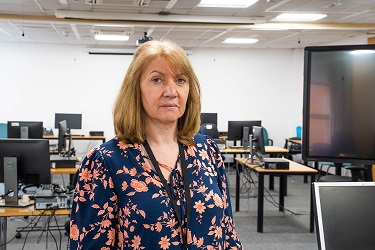Dr Jackie Hyland, Consultant in Health Protection, Public Health Agency, explains the new PHA pilot programme. To view our complete series of COVID-19 blogs, click here.

Imagine a fire has just swept through Northern Ireland. With a concentrated effort from everyone it has been largely put out. But we aren’t out of danger yet.
Small secondary fires continue to burn and if they aren’t attended to, they can spread just as quickly, causing even more devastation. This analogy helps to explain the role contact tracing will play after the first wave of coronavirus here.
Contact tracing is an effective and efficient method to help prevent the further spread of infections such as COVID-19, and we are now using this approach to target potential clusters which could spark new outbreaks.
Contact tracing works by identifying a confirmed case and asking them who they have been in contact with. Individual contacts are identified as being high risk, low risk or no risk. To be considered high risk you will have to have been in close contact with a confirmed case and have spent more than 15 minutes with them without any personal protection. This means that those who have casually passed by someone on the street will not be considered high risk. Contacts may also be people who have had the infection but were unaware of this because their symptoms were mild and they may have unwittingly spread infection.
The person with a confirmed infection and their contacts will be given advice on what to do about managing symptoms and of the need to self-isolate to prevent any wider spread of the virus. This advice is based on the information available on the PHA website and involves social distancing, handwashing and cleaning in the home to help protect people who are at risk. We will also advise people on how to best look after those in their care.
As we all know, life has changed completely in recent weeks. Shops, schools and workplaces are closed, and everyone has been asked to stay at home and practise good hand hygiene. This has been successful in breaking the chain of infection, but we would urge everyone to continue with these measures to help in the battle against this pandemic.
Thankfully we have not seen large numbers of clusters of COVID-19 here. We now need to focus on trying to prevent spread in areas where we know there is an increased likelihood of clusters – primarily places like care homes where large number of people share accommodation or are at increased risk of complications.
We are beginning a pilot programme which will focus on these areas, and we will be working with a number of care homes on this. Contact tracing will be at the centre of the programme.
This work and the potential scale and detail involved requires new ways of working, so there is still a lot that we need to learn about the process.
We have teamed up with colleagues in the university sector, the Health and Social Care Trusts, and Environmental Health to put in place all the necessary logistics. Our thanks go to all those who have offered and provided this assistance.
The processes being tested in this pilot programme will be crucial in helping to shape and implement future contact tracing activity, so we are using it to learn how we can make it as effective as possible before scaling up further.
It’s still important that we remind people of the part they can play in preventing the spread of coronavirus – adhere to the social distancing guidelines and make sure that you wash your hands regularly. If you do become unwell, telephone your GP –do not attend in person at a medical facility unless advised by a healthcare professional.
For further information on COVID-19 (coronavirus) please visit www.pha.site/coronavirus
Dr Jackie Hyland, Consultant in Health Protection, Public Health Agency
To view our complete series of COVID-19 blogs, click here.
